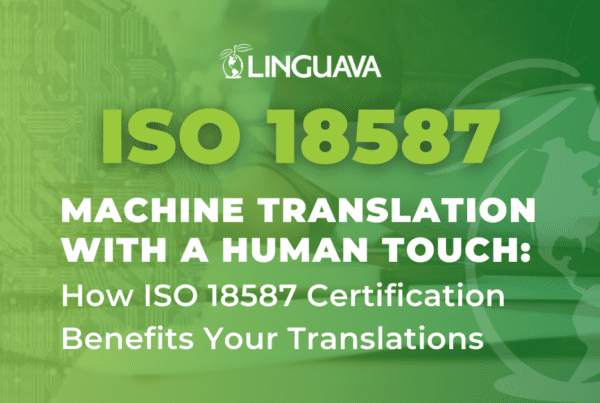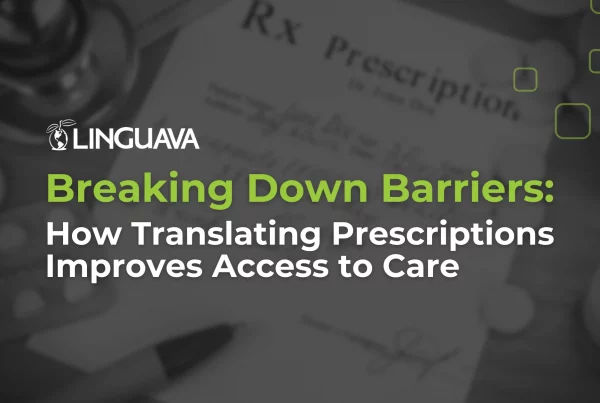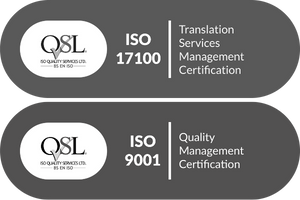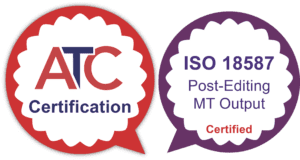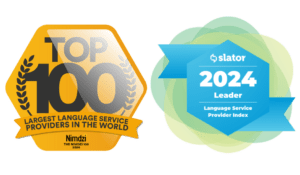Every medical practice has their own set of protocols, processes and paperwork that patients need to comprehend in order to obtain care. These can range from a simple task like renewing a prescription to the more complex conversation like understanding what steps need to be taken to have a necessary surgery.
As a medical provider, it is important to know which information is critical to translate in order to provide the best health outcomes for individuals whose preferred language is not English. You know the need for interpretation during the appointment, but what else can you do to make sure your patients navigate a potentially complex process successfully?
Here are six simple ways to improve your patient experience score as well as your patient’s health outcomes through document translation.
1. Signage
Every medical office or clinic should have all necessary signage translated into the top 15 languages. This ensures that every patient walking through the lobby or hospital halls understands that language access is provided free of charge to them. This allows you to stay compliant with the Joint Commission.
2. Patient Intake Forms and Discharge Instructions
Having all of your intake and discharge paperwork translated lets your patients fully participate in their health care. This allows them to receive the right information up front and makes certain they can follow the right post-procedure instructions once they get home.
3. Informed Consent and Complaint Forms
This allows your patients to make sure that they know what they’re signing up for and if there are any concerns or issues afterwards. They have the proper channels to be able to file a complaint and consent to procedures just like anyone else does.
4. Clinical Trial Documentation
This allows your patients to fully understand the other studies that have been done to make the best decision for themselves or their loved ones with the type of care or procedure they want to utilize.
5. Prescription Labels
A study that was done by the National Center for Biotechnology Information shows that when labels are not translated, the chance for misinterpretation is four times greater than when they are. This can lead to overuse or misuse of medications or to the patient not completing a necessary medication regimen. Translating prescription labels can lower the risk of liability for pharmacists since the patient is more likely to take their medication as prescribed.
6. Marketing and Website
Your organization should be making sure that any marketing materials or flyers that you’re sending out are in your patient’s native language so that they really understand the type of services you provide and whether they are the right fit for them.
These quick, simple six steps are a great way to improve your patient experience scores and health outcomes, no matter what language your patients speak or sign.
When it comes to medical care, communication that can be understood by your patients is key to providing the best possible patient experience. Let Linguava help you bridge the language gap and ensure that your message is communicated accurately.
Linguava Interpreters can help
At Linguava, we have the highest number of qualified and certified interpreters in Oregon. If you are looking for high quality Onsite Interpretation, Scheduled Video Interpretation, Video Remote Interpretation, Over the Phone Interpretation, American Sign Language or Translation and Localization services and exceptional customer service, please contact our sales team at sales@linguava.com to learn more.
If you have a file ready to translate, get your file analysis and free quote here.
Video Transcript:
Here are six simple ways to improve your patient experience score as well as your patient’s health outcomes through document translation.
The first area would be signage. Making sure that you have all the necessary signage translated at least in the top 15 languages, so that every patient that’s walking through your lobby or hospital halls understands that language access is provided free of charge to them. This allows you to stay compliant with the Joint Commission.
The second area would be patient intake forms and discharge instructions. This allows your patients to fully participate in their health care, giving the right information upfront and then making sure they can follow the right post procedure instructions once they get home.
Number three would be informed consent and complaint forms. This allows your patients to make sure that they know what they’re signing up for and if there are any concerns or issues afterwards, and they have the proper channels to be able to file a complaint just like anyone else does.
Number four would be clinical trial documentation. This allows your patients to fully understand the other studies that have been done to make the best decision for themselves or their loved ones with what kind of care or procedure they want to utilize.
Number five would be prescription labels. Study that was done by the National Center for Biotechnology Information shows that when labels are not translated, there is four times as likely of a chance for misinterpretation than when they are.
Number six and the last one would be marketing and website making sure that you’re providing marketing materials, any flyers that you’re sending out in your patient’s native language so that they really understand what type of services you provide and is the right fit for them. These quick, simple six steps are a great way to improve your patient experience scores and health outcomes. No matter what language your patients speak or sign.


